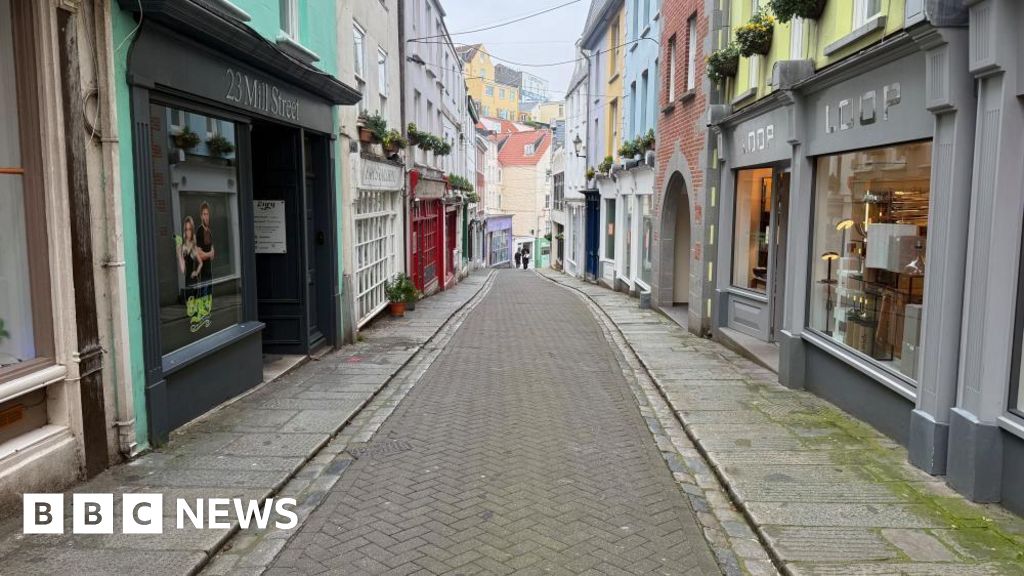Celebrating a Global Milestone: P&G’s Children’s Safe Drinking Water Program Delivers 25 Billion Liters of Clean Water – Global Citizen
:focal(2620,1821)/https://media.globalcitizen.org/60/0a/600a77ce-594c-49ce-b428-dd977e3d2328/d4_csdw_thailand_2149_1.jpg?#)
Report on Procter & Gamble’s Children’s Safe Drinking Water Program and its Contribution to the Sustainable Development Goals
Executive Summary
This report details the achievements of the Procter & Gamble (P&G) Children’s Safe Drinking Water (CSDW) Program, with a specific focus on its alignment with the United Nations Sustainable Development Goals (SDGs). The program has successfully delivered 25 billion liters of clean drinking water across more than 100 countries, significantly contributing to global efforts to achieve SDG 6 (Clean Water and Sanitation) ahead of its 2025 target. This initiative serves as a model for corporate action in addressing global development challenges through innovation, strategic partnerships, and a multi-faceted approach that impacts health, education, and gender equality.
Program Innovation and Alignment with SDG 6
The core of the CSDW program is a technological innovation that directly addresses the targets of SDG 6, which aims to ensure the availability and sustainable management of water and sanitation for all.
- Technology: The P&G Purifier of Water packet is a four-gram sachet capable of transforming 10 liters of contaminated water into safe drinking water within 30 minutes.
- Impact on SDG 6: By providing a simple, effective, and scalable solution, the program directly tackles the global challenge of nearly 2 billion people lacking access to safe drinking water, a key indicator for SDG 6.
Multi-Sectoral Impact on Sustainable Development Goals
The provision of clean water creates a positive ripple effect, advancing several interconnected SDGs beyond SDG 6. The program’s contributions include:
- SDG 3: Good Health and Well-being
By providing access to safe water, the program helps prevent waterborne diseases, which are a leading cause of death in children under five. This directly supports SDG Target 3.2, which aims to end preventable deaths of newborns and children. - SDG 4: Quality Education
With improved health, children’s school attendance increases. The program particularly supports SDG Target 4.1 by enabling children, especially girls who often bear the responsibility for water collection, to pursue their education consistently. - SDG 5: Gender Equality
Access to clean water at or near the home reduces the significant time and labor burden placed on women and girls for water collection. This contributes to SDG Target 5.4, which recognizes and values unpaid care and domestic work. - SDG 8: Decent Work and Economic Growth
Healthy communities are more productive. By improving health and freeing up time, the program enables families to engage in economic activities, fostering community resilience and supporting broader economic development.
The Role of Partnerships in Achieving the Goals (SDG 17)
The success of the CSDW program is a testament to the power of global partnerships, a principle central to SDG 17 (Partnerships for the Goals). P&G has collaborated with over 150 organizations to implement the program effectively.
Key Strategic Partners
- Americares
- CARE
- ChildFund
- Save the Children
- World Vision
These collaborations have been instrumental in reaching remote and vulnerable communities, including those affected by natural disasters, ensuring that the intervention has maximum impact.
Future Outlook and Continued Commitment
While the achievement of delivering 25 billion liters of clean water is a significant milestone, the CSDW program recognizes that the global water crisis persists. The program’s future strategy remains aligned with the long-term vision of the SDGs.
- Ongoing Crisis Response: The program will continue to provide immediate water purification solutions in disaster and emergency situations.
- Sustained Commitment: P&G and its partners will continue their efforts to expand the program’s reach, reinforcing the shared responsibility of the public and private sectors in achieving the 2030 Agenda for Sustainable Development.
Analysis of SDGs, Targets, and Indicators
1. Which SDGs are addressed or connected to the issues highlighted in the article?
- SDG 6: Clean Water and Sanitation: This is the central theme of the article. The entire initiative by Procter & Gamble (P&G) focuses on providing clean and safe drinking water to communities in need through its Children’s Safe Drinking Water (CSDW) Program. The article explicitly states that “nearly 2 billion people worldwide lack access to safe drinking water” and details P&G’s effort to deliver “25 billion liters of clean water.”
- SDG 3: Good Health and Well-being: The article directly links clean water to health outcomes. It mentions that “hundreds of children under 5 die from waterborne diseases caused by contaminated water” and that the P&G Purifier of Water packet helps families stay healthier by killing bacteria and viruses, leading to “fewer days of illness.”
- SDG 4: Quality Education: A clear connection is made between health, water access, and education. The article states, “When children are healthy, they can stay in school.” It also highlights that providing clean water at home gives young girls, who often bear the responsibility of water collection, the “opportunity to attend school consistently.”
- SDG 5: Gender Equality: The article touches upon the gendered impact of water scarcity. It points out that clean water access “reduces the disproportionate burden on women and girls,” who are often tasked with securing and managing water for their families, thereby supporting their empowerment and community development.
- SDG 17: Partnerships for the Goals: The success of the CSDW program is attributed to strong collaborations. The article emphasizes that the milestone “would not have been possible without the strength of collaboration” and mentions P&G’s work with “more than 150 partner organizations,” including NGOs like Americares, CARE, and World Vision, to reach remote communities.
2. What specific targets under those SDGs can be identified based on the article’s content?
- Target 6.1: “By 2030, achieve universal and equitable access to safe and affordable drinking water for all.” The article directly addresses this target by describing P&G’s program, which has delivered “25 billion liters of clean water to families and communities in need across more than 100 countries,” aiming to tackle the reality that “nearly 2 billion people worldwide lack access to safe drinking water.”
- Target 3.2: “By 2030, end preventable deaths of newborns and children under 5 years of age.” The article supports this target by explaining that the water purifier helps prevent waterborne diseases, which are a major cause of death for children under five. It states that “hundreds of children under 5 die from waterborne diseases,” and the program’s goal is to help them “stay healthier.”
- Target 4.1: “By 2030, ensure that all girls and boys complete free, equitable and quality primary and secondary education.” The article connects clean water access to this target by stating that it leads to “more days in school” for children. Specifically for girls, it enables them to “attend school consistently” instead of spending time securing water.
- Target 5.4: “Recognize and value unpaid care and domestic work… and the promotion of shared responsibility within the household and the family.” The program contributes to this target by aiming to reduce the “disproportionate burden on women and girls” who are traditionally responsible for water collection, freeing up their time for education and economic opportunities.
- Target 17.17: “Encourage and promote effective public, public-private and civil society partnerships.” The article is a case study for this target, detailing the partnership between a private company (P&G) and “more than 150 partner organizations” (civil society NGOs) to achieve a common development goal.
3. Are there any indicators mentioned or implied in the article that can be used to measure progress towards the identified targets?
-
For Target 6.1:
- Quantitative Indicator: The total volume of clean water delivered, which is explicitly stated as “25 billion liters.”
- Quantitative Indicator: The geographic reach of the program, mentioned as “more than 100 countries.”
-
For Target 3.2:
- Qualitative Indicator: A reduction in illness, as implied by the phrase “fewer days of illness.”
- Contextual Indicator: The article notes that “hundreds of children under 5 die from waterborne diseases,” providing a baseline problem that the program aims to reduce.
-
For Target 4.1:
- Qualitative Indicator: Increased school attendance, mentioned as “more days in school” and the ability to “attend school consistently.”
-
For Target 5.4:
- Qualitative Indicator: The “reduction of the disproportionate burden on women and girls” related to water collection tasks.
-
For Target 17.17:
- Quantitative Indicator: The number of collaborating partners, specified as “more than 150 partner organizations.”
Summary of Findings
| SDGs | Targets | Indicators |
|---|---|---|
| SDG 6: Clean Water and Sanitation | 6.1: Achieve universal and equitable access to safe and affordable drinking water for all. |
|
| SDG 3: Good Health and Well-being | 3.2: End preventable deaths of newborns and children under 5 years of age. |
|
| SDG 4: Quality Education | 4.1: Ensure that all girls and boys complete free, equitable and quality primary and secondary education. |
|
| SDG 5: Gender Equality | 5.4: Recognize and value unpaid care and domestic work. |
|
| SDG 17: Partnerships for the Goals | 17.17: Encourage and promote effective public, public-private and civil society partnerships. |
|
Source: globalcitizen.org
What is Your Reaction?
 Like
0
Like
0
 Dislike
0
Dislike
0
 Love
0
Love
0
 Funny
0
Funny
0
 Angry
0
Angry
0
 Sad
0
Sad
0
 Wow
0
Wow
0















































/environment-climate-change-and-health-(ech)/water-sanitation-hygiene-and-health-(wsh)/landfill-tuvalu-36092.tmb-1200v.jpg?sfvrsn=5c21fe40_1#)


.jpg.webp?itok=0ZsAnae9#)

























